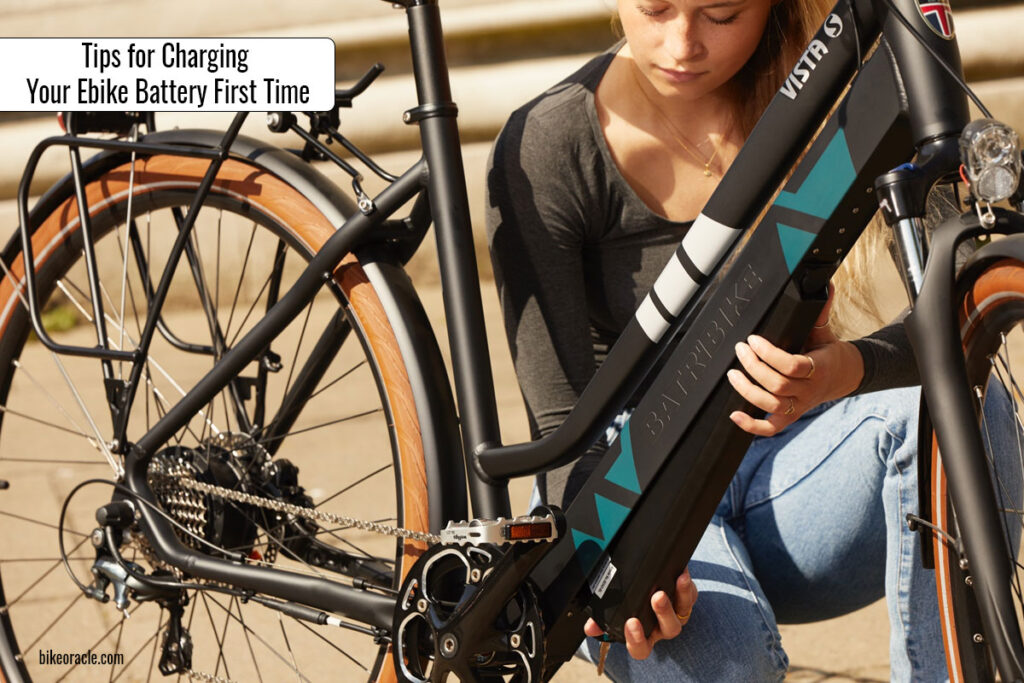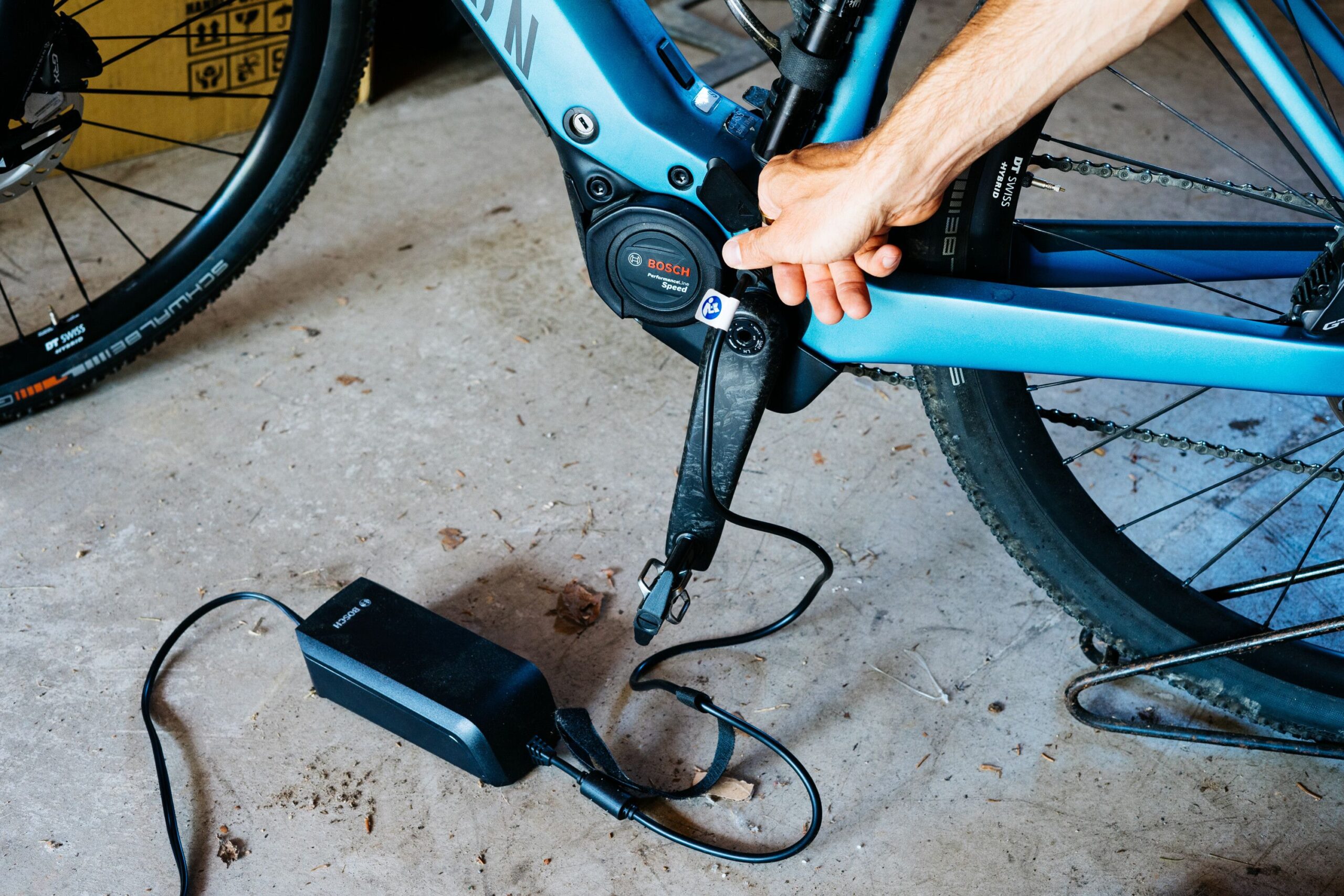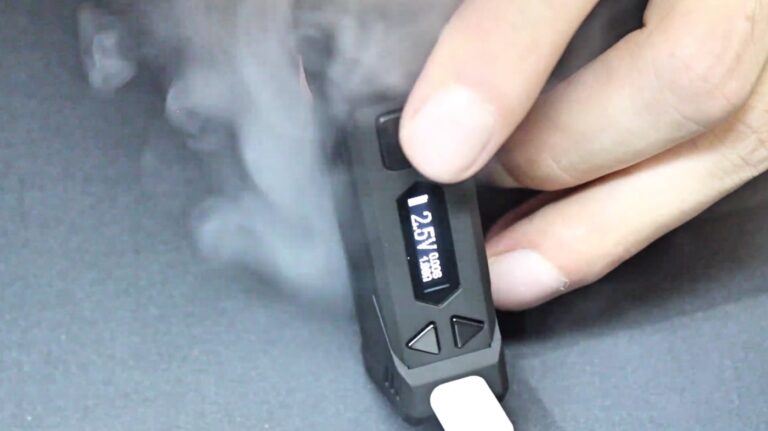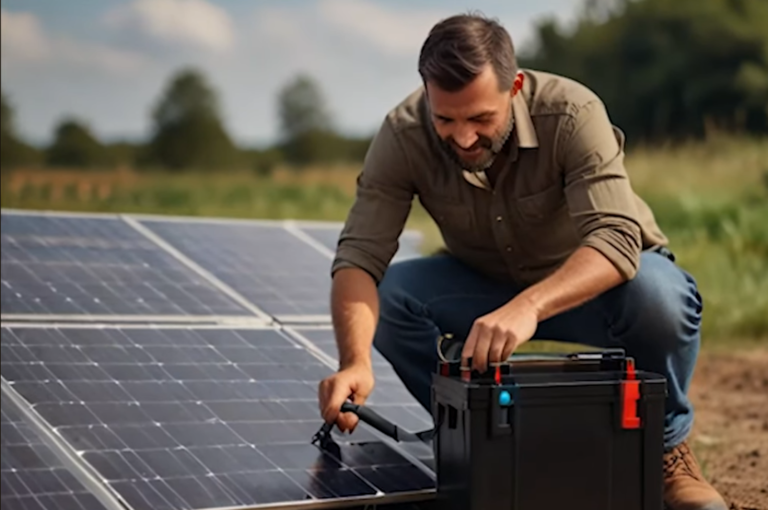How Long to Charge Ebike Battery?
The charging time for an e-bike battery depends on its capacity and the power supplied through the charger. On average, it can take anywhere from 3 to 6 hours to fully charge an e-bike battery. For new e-bikes, it’s recommended to charge the battery completely for up to 12 hours for the first time to ensure all cells are activated. Here are detailed tips to ensure the longevity and safety of your e-bike battery:
Tip #1: Charge on a Clean, Flat Surface
Always charge your e-bike battery on a clean and level surface. Avoid placing it in direct sunlight or near heat sources, which could cause overheating and damage.
Tip #2: Avoid Water Exposure
Never charge your battery near water or in damp environments to prevent corrosion or short circuits. If you must charge in an area with potential water exposure, use an extension cord to keep the charger and battery away from sinks or showers. Additionally, cover the battery with a plastic bag or tarp if there’s any risk of rain while charging.
Tip #3: Use the Correct Charger
Always use the charger that matches your e-bike battery’s specifications. Lithium-ion batteries, the most common type, typically operate on 36V, 48V, or 52V with varying amps. Using the wrong charger can damage the battery. Label chargers clearly if multiple e-bikes are in your household to avoid mix-ups.
Tip #4: Fully Charge for the First Time
For the first charge, plug the battery in for at least 12 hours. This initial charge ensures that all cells are balanced and ready for optimal performance. Afterward, the battery will charge efficiently and stop automatically when full.
Tip #5: Check Battery Levels Regularly
Check your battery levels before and after each ride. Ensure it’s sufficiently charged for your intended trip and doesn’t drop below 30% if stored for a while. Frequent recharging isn’t necessary and can harm the battery’s longevity.
Tip #6: Charge Often, But Not Excessively
For best performance, charge your battery regularly when it drops to 50-60%. However, avoid overcharging by unplugging the charger once the battery is full. Overcharging can lead to mini charging cycles that reduce battery lifespan.
Tip #7: Perform Occasional Full Charges
While regular partial charging is ideal, fully charge your battery every 2-3 weeks to balance the cells and maintain long-term capacity.
Tip #8: Avoid Prolonged Overcharging
Leaving your battery plugged in for extended periods, such as during vacations, can harm its lifespan. Modern chargers prevent overcharging but unplug them when not in use to avoid unnecessary wear.
Tip #9: Store Batteries Properly
If storing your battery for a long time, keep it charged at 50% to 70%. Avoid storing it fully drained or fully charged, as this can degrade the cells. Store the battery in a cool, dry place to prevent damage.
Tip #10: Avoid Extreme Temperatures
Charge and store your battery within a temperature range of 60°F to 70°F for optimal performance. Avoid charging below freezing (36°F) or above 110°F, as extreme temperatures can damage the cells.
Tip #11: Invest in a Second Charger
Consider buying an additional charger for convenience, especially if you use your e-bike for commuting. Having a charger at work or school ensures you won’t run out of power.
Tip #12: Remove the Battery Periodically
If your e-bike allows charging while the battery is attached, remove it occasionally to inspect the connections for dirt, moisture, or corrosion. Clean the terminals gently if needed.
Tip #13: Test the Battery If Issues Arise
If your battery isn’t charging correctly, test it with a voltmeter or multimeter after a full charge. This can help identify potential issues before they worsen. Consult your manufacturer if the problem persists.
Tip #14: Know Common Battery Problems
Be aware of common battery issues, such as reduced capacity or failure to charge. Regular maintenance and proper charging habits can prevent these problems and extend your battery’s lifespan.
By following these tips, you can ensure your e-bike battery remains reliable and efficient for years to come.

Charging your eBike battery correctly ensures its longevity and safety. Here’s a comprehensive guide based on your queries:
1. Charging Your eBike Battery for the First Time
- Inspect the battery: Before the first charge, ensure the battery and charger are undamaged. Read the manufacturer’s manual for specific instructions.
- Fully charge before use: Lithium-ion batteries typically come partially charged. Charge it to 100% before your first ride to calibrate the battery management system (BMS).
- Use the original charger: Avoid third-party chargers to prevent damage or void warranties.
- Avoid overcharging: Modern eBike batteries stop charging automatically when full, but unplug after a full charge to be safe.
2. General eBike Battery Charging Instructions
- Plug in the charger first: Connect the charger to the power outlet, then plug it into the battery or bike (depending on the model).
- Charge in a cool, dry place: Avoid extreme temperatures; ideal is 50°F–77°F (10°C–25°C).
- Follow charging times: Avoid interrupting a charge cycle or charging too frequently if unnecessary.
- Avoid draining fully: Lithium-ion batteries last longer when kept between 20%–80%. Only occasionally charge to 100% for calibration.
3. Trek eBike Battery Charge Time
Trek uses Bosch or similar lithium-ion batteries:
- Battery size: Trek eBike batteries range between 400Wh and 750Wh.
- Charge time:
- 4A charger: ~2-3 hours for 50%, ~4-6 hours for 100%.
- 6A fast charger: ~2 hours for 50%, ~3-4 hours for 100%. Check your model for exact charging times.
4. eBike Charging Chart (Approximate)
| Battery Capacity | 50% Charge | 100% Charge |
|---|---|---|
| 400Wh | 1.5-2 hrs | 3-4 hrs |
| 500Wh | 2 hrs | 4-5 hrs |
| 750Wh | 3 hrs | 5-6 hrs |
Charge times depend on your charger’s output (e.g., 2A, 4A, or 6A).
5. Charging Lithium-Ion Bike Batteries Safely
- Avoid deep discharges: Don’t let the battery drain to 0%; recharge when it drops to 20%.
- Don’t overheat: Let the battery cool down after a ride before charging.
- Use a surge protector: Protect your battery from power surges.
- Store properly: Store at ~50% charge if unused for extended periods and keep it in a cool, dry place.
6. Additional Tips for Safe Charging
- Check for firmware updates: Some eBike manufacturers provide firmware updates for better battery management.
- Avoid cheap replacements: Non-original batteries or chargers can be unsafe and degrade performance.
- Monitor during charging: Avoid leaving it charging unattended overnight, especially with non-smart chargers.





